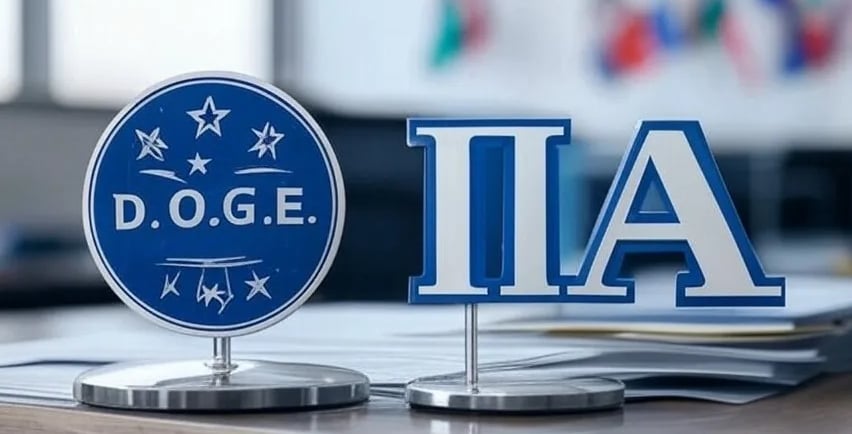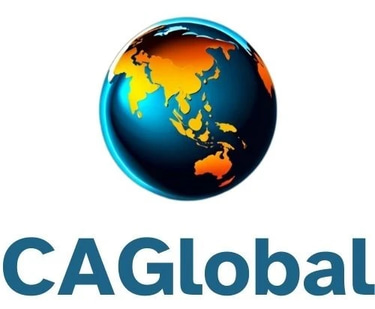Global Governance Standards for Efficiency and Accountability (GGSEA) IIA DOGE
(Version 0.1 ) a proposed set of standards for good governance inspired by the Institute of Internal Auditors (IIA) standards and tailored for initiatives like the Department of Government Efficiency (DOGE)
2/10/20253 min read


Global Governance Standards for Efficiency and Accountability (GGSEA)
(Version 0.1 February 10, 2025)
1. Ethical Framework and Integrity
Standard 1.1: Code of Conduct
Develop and enforce a code of conduct for all officials, aligning with global best practices (e.g., OECD principles). Include guidelines on gifts, political neutrality, and public service ethos. Review annually.
Standard 1.2: Conflict of Interest ManagementMandate disclosure of personal, financial, or familial interests that could influence decisions. Establish independent boards to review disclosures and enforce recusal protocols.
2. Accountability and Transparency
Standard 2.1: Public Reporting
Publish quarterly reports on governance activities, budgets, and policy outcomes in open-data formats (e.g., machine-readable PDFs, APIs). Include success metrics and failures.
Standard 2.2: Independent Audit & OversightCreate audit bodies with autonomy from executive influence. Adopt IIA standards for audit quality, including mandatory rotation of lead auditors.
Standard 2.3: Whistleblower SafeguardsLegally protect whistleblowers through anti-retaliation laws. Use encrypted platforms for anonymous reporting and establish rewards for exposing corruption.
3. Strategic Management
Standard 3.1: Strategic Planning
Align multi-year strategic plans with national priorities (e.g., SDGs). Require public consultation during drafting and annual progress reviews.
Standard 3.2: Policy ImplementationAssign clear ownership for policy execution, with timelines and milestones. Use digital dashboards to track progress and trigger corrective actions for delays.
4. Risk Management
Standard 4.1: Proactive Risk Assessment
Conduct scenario-based risk assessments (e.g., climate, cyberattacks, fiscal shocks). Publish risk registers and mitigation plans.
Standard 4.2: Crisis PreparednessDevelop protocols for emergencies (e.g., pandemics, infrastructure collapse). Test through simulations and designate cross-agency response teams.
5. Performance Measurement
Standard 5.1: Outcome-Linked KPIs
Define KPIs for all programs (e.g., "Reduce bureaucratic processing time by 30% within 18 months"). Benchmark against peer nations.
Standard 5.2: Continuous ImprovementUse AI-driven analytics to identify inefficiencies. Mandate "lessons learned" reviews after major projects or crises.
6. Stakeholder Engagement
Standard 6.1: Public Participation
Institutionalize participatory budgeting and digital crowdsourcing platforms (e.g., citizen feedback on infrastructure projects).
Standard 6.2: Multi-Stakeholder CollaborationPartner with NGOs, academia, and industry for policy co-creation. Host annual stakeholder summits to align priorities.
7. Legal and Regulatory Compliance
Standard 7.1: Rule of Law Enforcement
Ensure all policies comply with domestic laws and international treaties (e.g., human rights conventions). Establish judicial oversight mechanisms.
Standard 7.2: Regulatory ModernizationSunset obsolete regulations automatically after 5 years. Use cost-benefit analyses for new rules to minimize economic disruption.
8. Human Resource Management
Standard 8.1: Merit-Based Recruitment
Use blind recruitment processes and standardized testing for civil service roles. Publish appointment criteria publicly.
Standard 8.2: Capacity BuildingInvest in leadership programs and technical certifications (e.g., blockchain for procurement teams). Tie promotions to skill development.
9. Financial Stewardship
Standard 9.1: Transparent Budgeting
Provide real-time budget dashboards with granular expenditure tracking (e.g., per-project spending). Audit contingency funds rigorously.
Standard 9.2: Fiscal SustainabilityCap deficits to 3% of GDP unless approved by supermajority vote. Prioritize debt reduction in economic booms.
10. Technology and Innovation
Standard 10.1: Digital Governance
Digitize 100% of citizen-facing services (e.g., permits, taxes). Adopt zero-trust cybersecurity frameworks to protect data.
Standard 10.2: Innovation EcosystemsCreate gov-tech sandboxes to pilot AI, blockchain, and IoT solutions. Reward agencies for adopting automation.
11. Sustainability and Continuity
(Original Standard 8, expanded)
Standard 11.1: Long-Term Institutionalization
Embed initiatives like DOGE into law to prevent dissolution by future administrations.
Standard 11.2: Knowledge PreservationArchive SOPs, training materials, and audit findings in centralized, searchable repositories.
12. Global Collaboration
(Original Standard 10, expanded)
Standard 12.1: Cross-Border Benchmarking
Participate in global governance indices (e.g., WGI, CPI) and adopt top-tier practices.
Standard 12.2: Anti-Corruption NetworksJoin international bodies like the UNCAC to combat illicit financial flows and recover stolen assets.
Implementation Roadmap
Pilot Phase: Test standards in low-risk agencies (e.g., procurement departments).
Legislative Anchoring: Pass laws mandating compliance (e.g., "Public Governance Efficiency Act").
Capacity Building: Train 10% of civil servants annually as "governance champions."
Public Scorecards: Rank agencies publicly on adherence to GGSEA standards.
This integrated framework addresses both operational efficiency (e.g., SOPs, audits) and systemic challenges (e.g., corruption, innovation).

